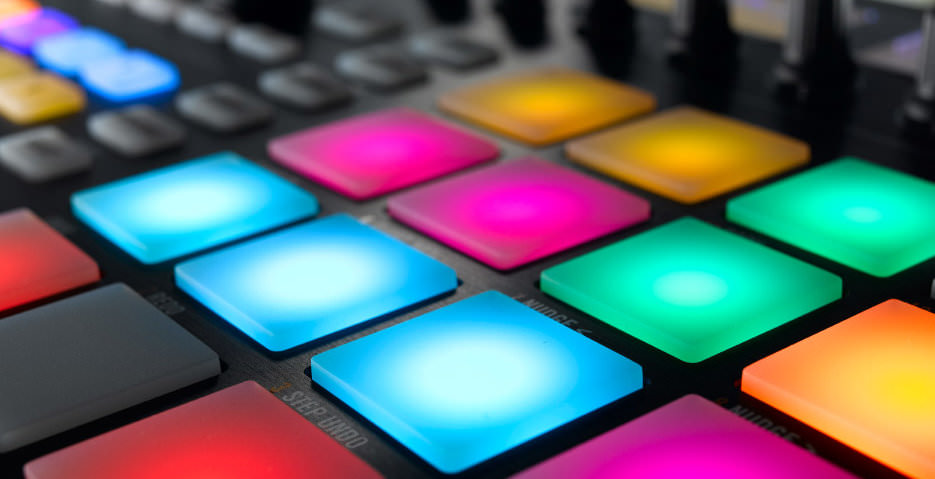In our latest sound design and drum programming walkthrough we take a look at techniques used by some of the young British house producers enjoying crossover chart success.
Beat Dissected is a regular series in which we deconstruct drum patterns, showing you how to recreate them in any DAW. Just copy our grid in your own software to recreate the loop.
Here’s the beat we’re building today:
To download the samples for this beat, click here. The samples are provided on a completely royalty-free basis. They may not be sold or given away, either in whole or in part.
You must register for a free Attack account and sign up to receive our newsletter in order to download the samples. New members can register here. Existing members can log in here.
Spec
Tempo
120-125bpmSwing
60-65%Sounds
A mixture of heavily processed samplesStep 1
The sound we’re looking for in this beat is exceptionally polished, highly processed and slick, drawing on pop production techniques as much as it does on traditional house techniques. The placement of the drum hits is nothing out of the ordinary but the sound design which goes on in the background is quite involved.
As always we start with the kick. We’ve selected a 909-style kick layered with a more 707 or a similar style kick to add a snappy transient sound to the kick. This in turn is blended with a quieter percussion hit to add a little more tonality to the sound. This step is optional but gives the sound more character in the mid frequencies. Like most of the drum hits in this beat, the kick is heavily compressed for a very in-your-face sound. We’re not looking for subtlety here.
The four-to-the-floor kick pattern itself is as simple as it gets.
Step 2
The clap follows in the same vein as the kick: a very simple pattern combined with a lot of processing on the sound itself. The sample is based on a combination of two TR-808 claps, slightly detuned, panned to opposite sides of the stereo image and with a slight time delay between the two. You need to be very careful with phase issues when layering similar sounds in this way, but when you’re happy with the overall sound (and sure it also works in mono just to be on the safe side), the result is a bigger, more characterful effect than a single clap sample. To give things even more character we’ve also layered on a couple more claps (in this case from a Boss DR-202 and a Yamaha RX11, although the sample sources themselves don’t really matter – you could just as easily use live handclap samples).
After this we’ve again compressed and limited the layered sample to squash the dynamics and make it louder and more aggressive. Note that the claps are nudged off the grid to give a more rushed feel to the groove.
Step 3
The hi-hats are a little easier, based on TR-808 samples in this case and following a simple pattern of 16th-notes with open hats on the offbeats. Note the small velocity variations throughout. The groove of the beat comes mainly from the swing setting, which you can begin to adjust at this stage to get the feel right. The variation between closed hat hits helps to emphasise the effect.
Step 4
In order to add a little more character we’ll double up the open hat hits with a cymbal. Again, any sound can work here but it’s important to adjust the envelope of the hit to suit the groove of the track. The decay has been adjusted in our case so that it roughly matches the decay of the open hat sound. The sound is quite high in the mix, filling in some top-end frequencies. Depending on your sample selection you may need to cut some upper mid-range frequencies from the cymbal to avoid clashing with the clap; we’re looking for each element to occupy its own space in the mix here.
step 5
Finally, we again add a little more character using a shaker sample, which helps to emphasise the groove around the offbeats. The sample selection and sound design is critical here, as in every step of this beat. We’re looking for a sound which fills a gap in the frequency range without overpowering any of the other percussive parts. We’ve gone for a live shaker sample, which we’ve shortened to match the tempo of the beat. If you pick a shorter sound you may also want to experiment with a very short reverb. The sound is quite low in the mix but helps to fill frequencies and add groove.
The finishing touch is yet another dose of heavy compression across the entire drum sub-mix.
To download the samples for this beat, click here. The samples are provided on a completely royalty-free basis. They may not be sold or given away, either in whole or in part.
You must register for a free Attack account and sign up to receive our newsletter in order to download the samples. New members can register here. Existing members can log in here.





